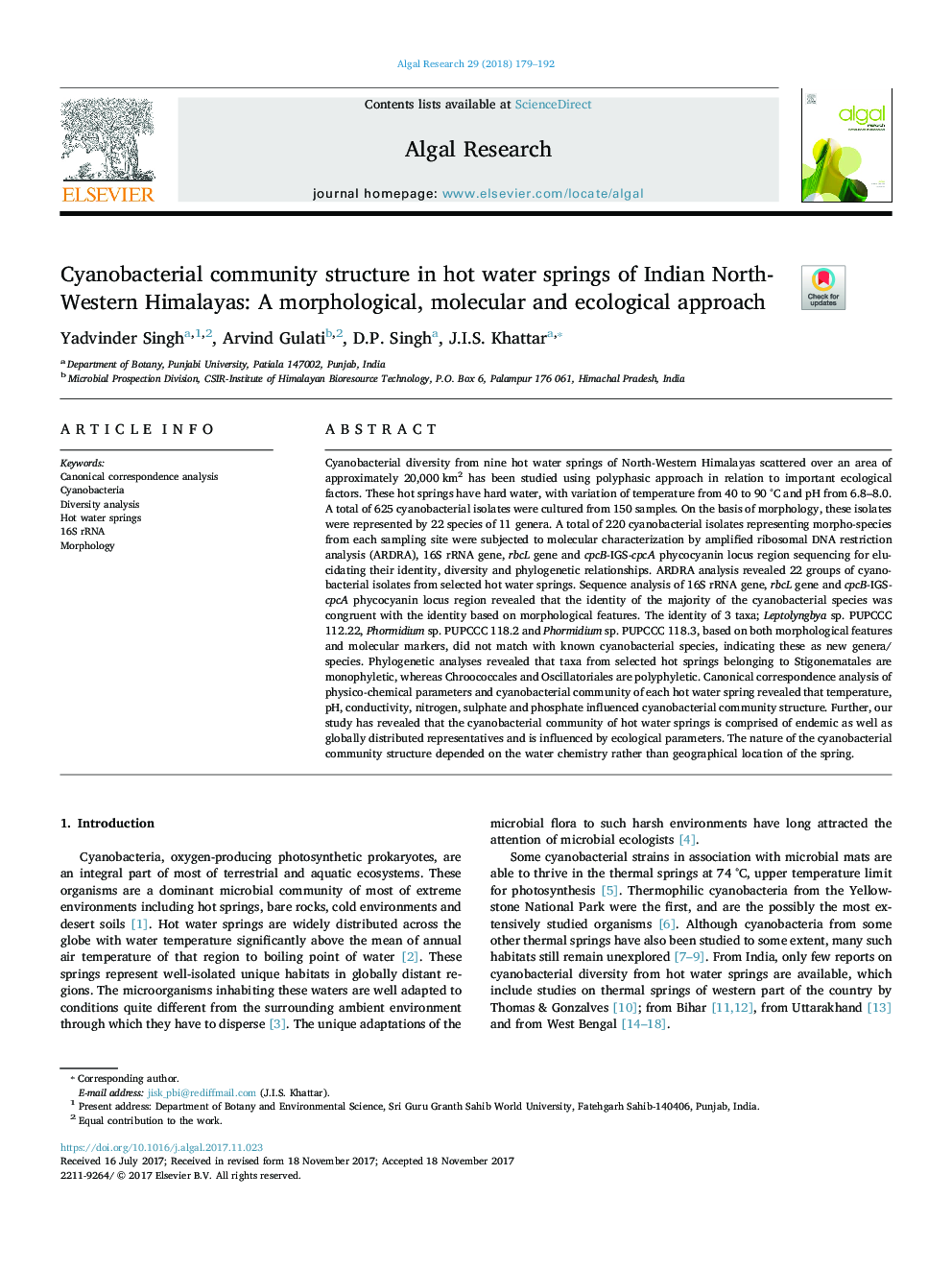| Article ID | Journal | Published Year | Pages | File Type |
|---|---|---|---|---|
| 8086342 | Algal Research | 2018 | 14 Pages |
Abstract
Cyanobacterial diversity from nine hot water springs of North-Western Himalayas scattered over an area of approximately 20,000 km2 has been studied using polyphasic approach in relation to important ecological factors. These hot springs have hard water, with variation of temperature from 40 to 90 °C and pH from 6.8-8.0. A total of 625 cyanobacterial isolates were cultured from 150 samples. On the basis of morphology, these isolates were represented by 22 species of 11 genera. A total of 220 cyanobacterial isolates representing morpho-species from each sampling site were subjected to molecular characterization by amplified ribosomal DNA restriction analysis (ARDRA), 16S rRNA gene, rbcL gene and cpcB-IGS-cpcA phycocyanin locus region sequencing for elucidating their identity, diversity and phylogenetic relationships. ARDRA analysis revealed 22 groups of cyanobacterial isolates from selected hot water springs. Sequence analysis of 16S rRNA gene, rbcL gene and cpcB-IGS-cpcA phycocyanin locus region revealed that the identity of the majority of the cyanobacterial species was congruent with the identity based on morphological features. The identity of 3 taxa; Leptolyngbya sp. PUPCCC 112.22, Phormidium sp. PUPCCC 118.2 and Phormidium sp. PUPCCC 118.3, based on both morphological features and molecular markers, did not match with known cyanobacterial species, indicating these as new genera/species. Phylogenetic analyses revealed that taxa from selected hot springs belonging to Stigonematales are monophyletic, whereas Chroococcales and Oscillatoriales are polyphyletic. Canonical correspondence analysis of physico-chemical parameters and cyanobacterial community of each hot water spring revealed that temperature, pH, conductivity, nitrogen, sulphate and phosphate influenced cyanobacterial community structure. Further, our study has revealed that the cyanobacterial community of hot water springs is comprised of endemic as well as globally distributed representatives and is influenced by ecological parameters. The nature of the cyanobacterial community structure depended on the water chemistry rather than geographical location of the spring.
Related Topics
Physical Sciences and Engineering
Energy
Renewable Energy, Sustainability and the Environment
Authors
Yadvinder Singh, Arvind Gulati, D.P. Singh, J.I.S. Khattar,
